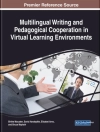‘Wells carefully shares important information, examples, and resources helpful to any district that is continually developing policies and procedures in technology. He has developed a wonderful field guide for any administrator charged with developing such policies.’
—Donnan Stoicovy, Principal
Park Forest Elementary School, State College, PA
Develop safe technology practices that support learning and protect your school, staff, and students!
Today′s emerging technologies present educators with a wealth of teaching opportunities combined with challenges that include legal, safety, and privacy issues. This comprehensive guide is designed to support appropriate use of technology for teaching and learning and give school leaders a clear road map for creating, implementing, and maintaining effective instructional technology policies. In jargon-free terms, Christopher Wells explains legal considerations and offers case studies and concrete strategies help educators:
- Evaluate their schools′ needs
- Involve all school, district, and community stakeholders in a collaborative effort
- Manage technology access to protect student and staff privacy
- Respond to challenges presented by social networking and emerging technologies
- Avoid inappropriate, costly use of technology
- Develop acceptable use policies
Smarter Clicking helps school and district administrators develop policies that support the informed use of cutting-edge technology within an environment that advances learning while protecting schools, students, and staff.
Mục lục
About the Author
Preface
1. Optional No Longer: The Need for Effective School Technology Policies
Why school technology policies are essential
Legal policy requirements
Comparing technology expectations and correlating policies
Using policies to shape instructional expectations for technology
2. It’s Everyone’s Responsibility: A Collaborative Approach to Technology Policy Development
Leading technology policy development and implementation
Policy development and implementation responsibilities
Comparing the policies of school and home technology use
Policies for the larger learning community outside of school
Involving more learning community members in policy development
3. Good Fences Make Good Users: Policies for Protecting Privacy
Student and staff privacy: the policy perspective
Managing sensitive instruction-related information
Guidelines for protecting student information
The emerging social networking challenge
4. Keeping Money in the Checking Account: Policies for Protect Technology Investments
The real cost of innovation in the classroom
Educating and the investment cost of technology
Developing policies to address the changing scope of educational technology investments
5. Knowing the Secret Handshake: Technology Access Policies
Evaluating school technology functions and related policies
Developing Acceptable use policies (AUPs)
Using passwords to secure access
6. Buttons, Bells, and Flashing Lights: Managing K-12 Internet Use
Internet applications in the classroom
Policy development to support instructional internet use
Policies to protect others’ privacy and personal rights
7. No Stone Unturned: Implementing Technology Policies and Procedures
Exploring the impact of policies on the learning culture
Shaping the culture with school technology policies and procedures
Supporting culture change with technology team members
Managing community response to school technology policies
Preventing conflicts over policy components
8. In My Crystal Ball, I See…: Emerging Technology Concerns
Policy challenges of ubiquitous technology
Addressing emerging technology and limiting risks
Policy development to support future appropriate school technology use
Resources
References
Index
Giới thiệu về tác giả
Christopher Wells is the IT policies and communications director for Gwinnett County Public Schools, the largest school district in Georgia. With more than 160, 000 students in the district, he responds to the diverse, creative ways technology is being used in classrooms. Christopher presents regularly and his enthusiasm for his topic material is contagious (even if the audience thinks that technology policies and procedures are boring!). By incorporating realistic examples and messages with humor, compassion, and vision, Christopher consistently engages diverse audiences and leaves listeners focused and energized on the development of new resources for students and teachers. In the past, he worked for Arthur Andersen, a global consulting firm, and developed and managed a global distance learning consulting practice. Prior to that, Christopher was a high school science and computer science teacher, developing curricula for biology, ecology, environmental science, oceanography, science research, and AP Pascal classes.Christopher is a graduate of the Florida Institute of Technology in Melbourne, Florida, earning his BS in science education and biology and an MS in computer education with an emphasis on instructional technology. He is currently a Ph D student at Walden University’s College of Management and Technology in leadership and organizational change. Christopher is still actively involved in several organizations that involve youth and the natural world, including a youth retreat movement for middle school students and a sea turtle research project run on Wassaw Island, Georgia.












